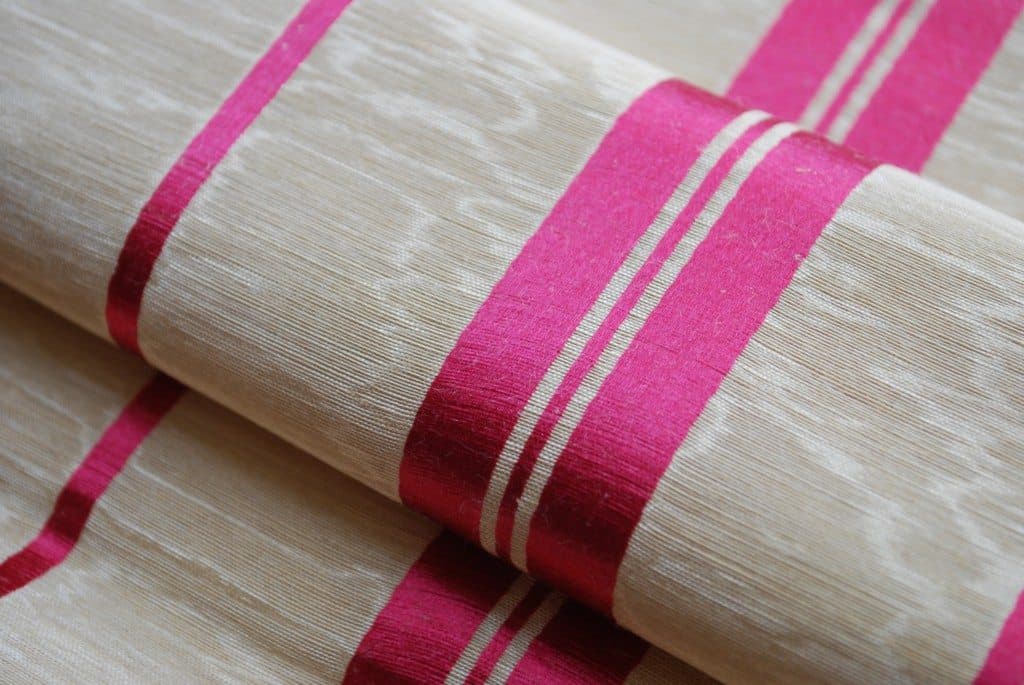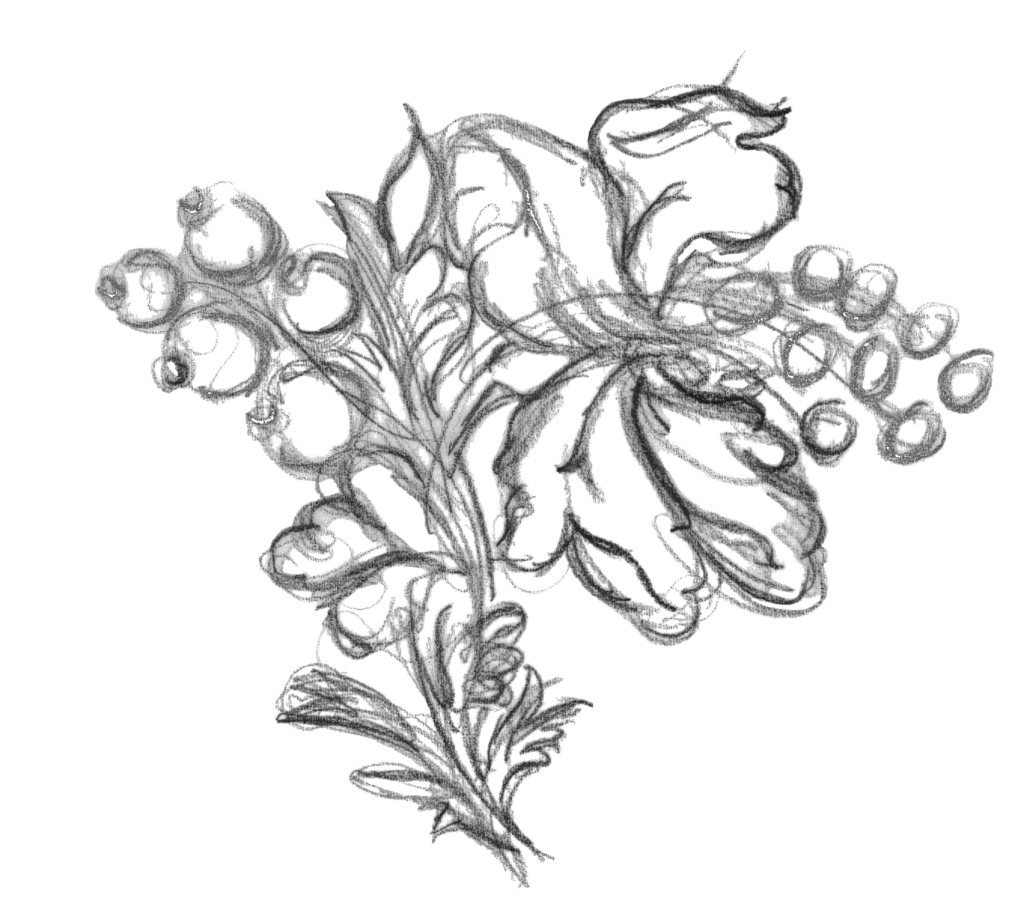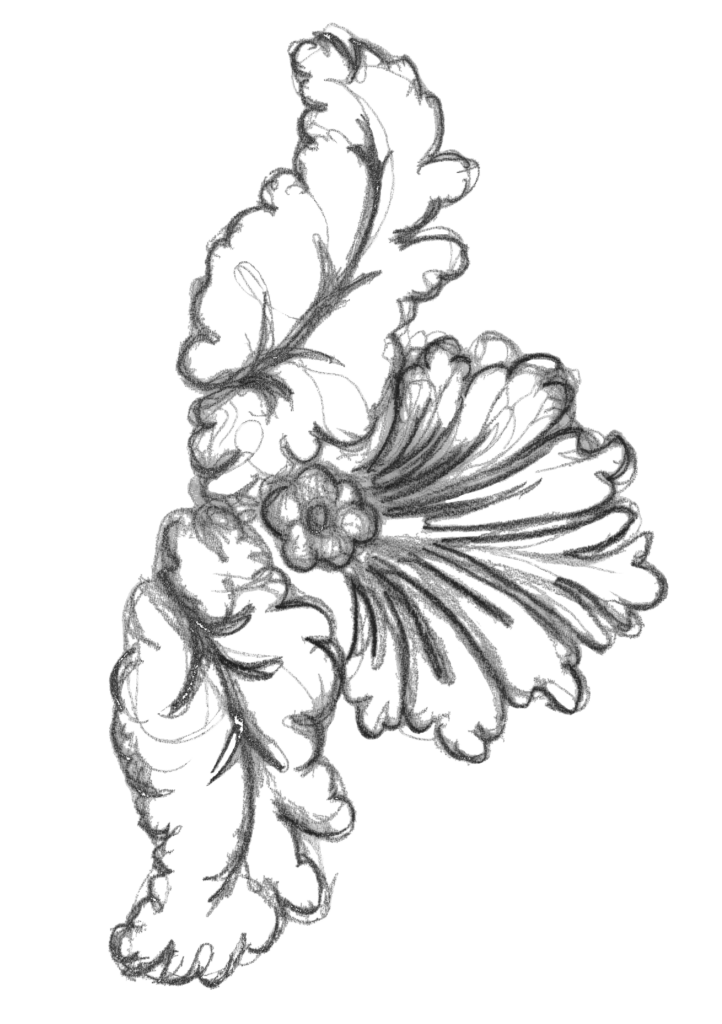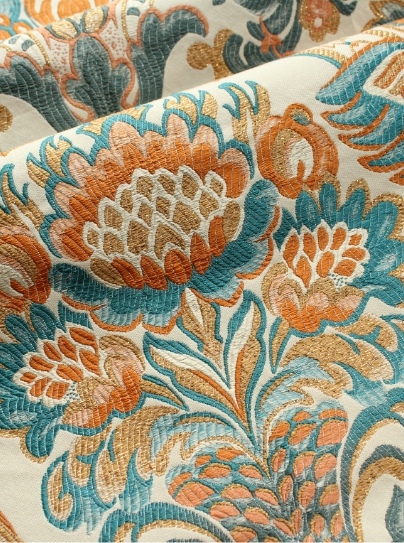The Watermark of Quality – the art of Moiré in Silk Fabrics
There have been many rather brash flock stripe wallpapers and mock effects created to imitate this technique but none come close to the subtle beauty of true moiré.
The word moiré is French (taken from moirer, meaning to water) and was originally used to describe an effect applied to silk material, that gave it a wavy or rippled texture, much like water does to sand. Despite this description water is not actually used during the moiré process. In fact it is embossed onto the surface under huge pressure, using steam filled rollers to create an organic, non repeating pattern.
Read about our latest moiré project here
Humphries Weaving had not been manufacturing for long before we were challenged by textile historians to weave moiré, with a demand for the special effect of the watered pattern. To the untrained eye one could be forgiven for thinking that perhaps it is a weave structure or a Jacquard pattern that is used to create the effect across the surface but this is not the case. The true moiré is difficult to achieve, subject to failure and costly to produce because the fabric must first be woven prior to the application of the moiré finish.
The shimmering surface of moiré is most appreciated on silk and also shiny synthetics because of the rippling patterns created in the process. The fabric must have a sound and compact rib weave structure. In understanding that a rib fabric will moiré and a smooth flat cloth such as satin will not, the technique can be used to great effect.
Two layers of the rib fabric are laid upon each other and skillfully fed through the steam rollers where pressure is applied to the surface. However, pressure alone will not produce the desired effect as heat must also be applied to the cloth surface. Imagine pressing a crease into trousers with a steam iron, or clothes press and you have the idea.
Moiré fabrics of a plain nature were popular in the 17th Century and were listed in King Williams Inventory at Hampton Court Palace in 1695. These cloths were furnishings for wall hangings hung loose between tapestries to decorate the state interiors. The watered patterns were uncontrolled and wildly rolled across the plain ribbed surfaces. Today these have been rewoven in a silk, mohair and linen mix in Palace archive colours that give an insight into the richness of the effect.
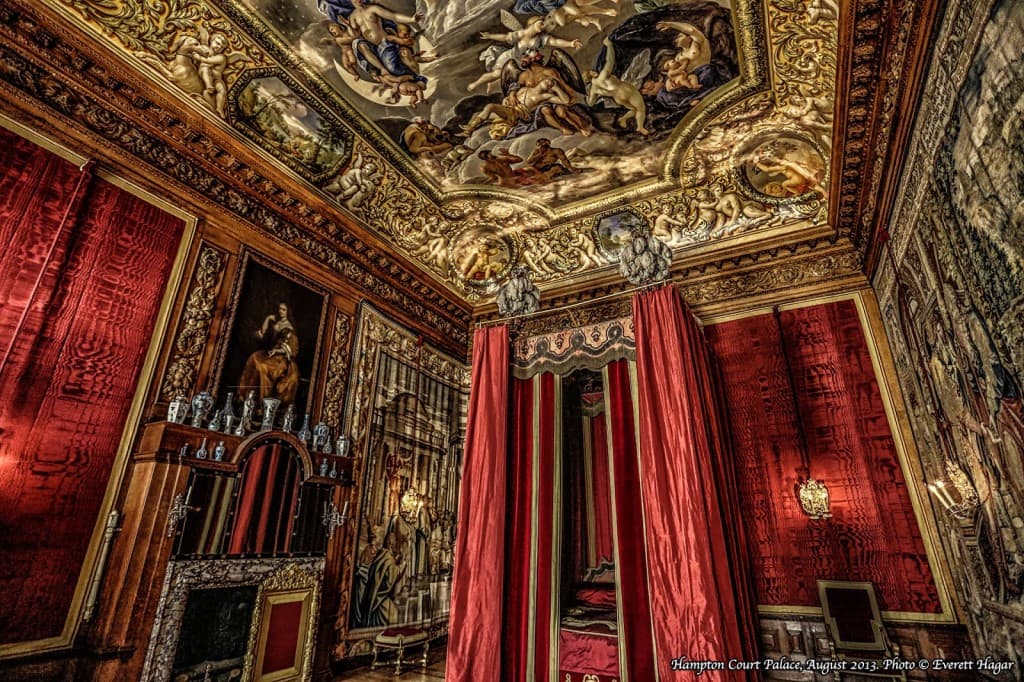
Moiré plain wall coverings for William III State bedroom Hampton Court Palace
Our most recent moiré commission for Hampton Court Palace was for the walling of the Cumberland Art Gallery. The silks may not be quite as important as the paintings from the Royal Collection that they showcase, but for Humphries Weaving, it represents the skill of the most experienced textile artists. It is testament to the craft by which we are bound and we survive as one of very few companies still able to produce this desired effect.
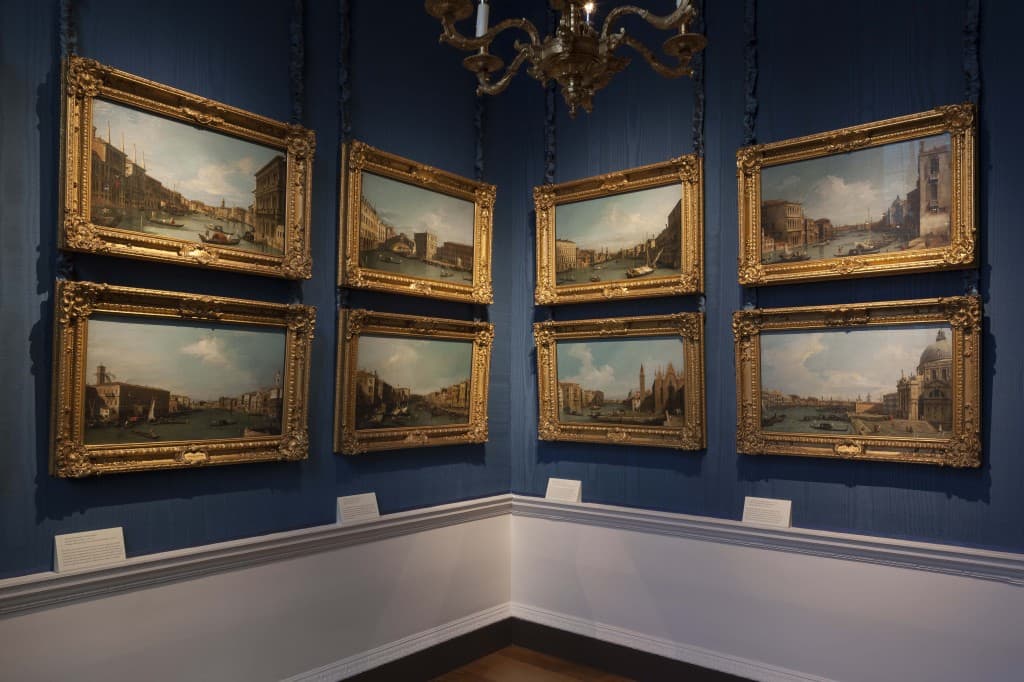
Moiré plain wall coverings for The Cumberland Art Gallery, Hampton Court Palace
During the late 18th and early 19th Centuries the fashion for striped decoration for furnishings became more sophisticated and the development of more precise techniques in machining meant greater control on the process of cloth pressing. Intricate layouts of taboret resulted in highly decorative interiors such as those seen in Apsley House, Attingham Park, Nostell Priory, and Castle Coole.
Moiré Taboret Stripe for Robert Adams Interior of Apsley House
You can learn more about our production and finishing services here
[list]
[list_item icon=”ss-link”]Hampton Court Palace[/list_item]
[list_item icon=”ss-link”]Apsley House, English Heritage[/list_item]
[list_item icon=”ss-link”]Attingham Park, National Trust[/list_item]
[list_item icon=”ss-link”]Nostell Priory, National Trust[/list_item]
[list_item icon=”ss-link”]Castle Coole, National Trust[/list_item]
[/list]
